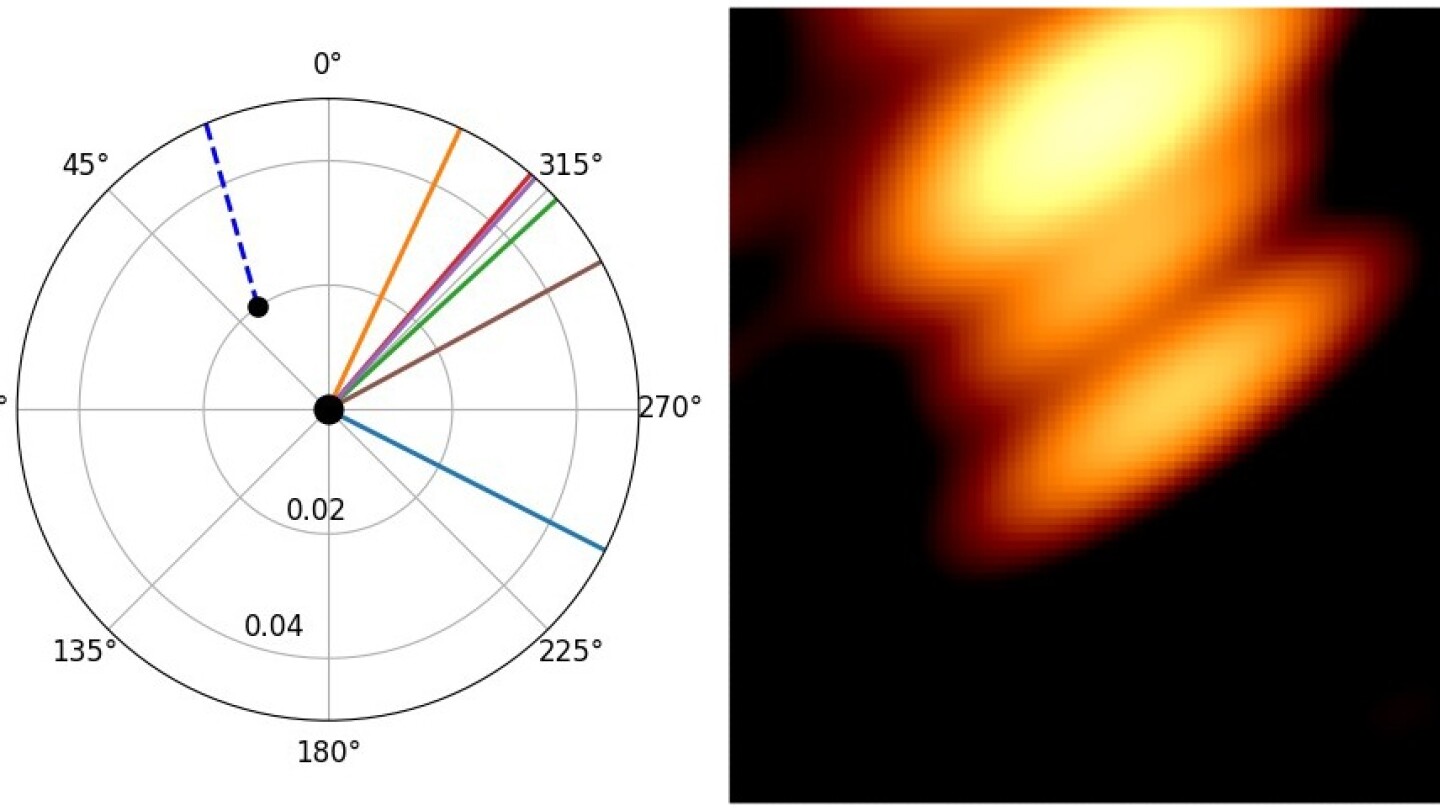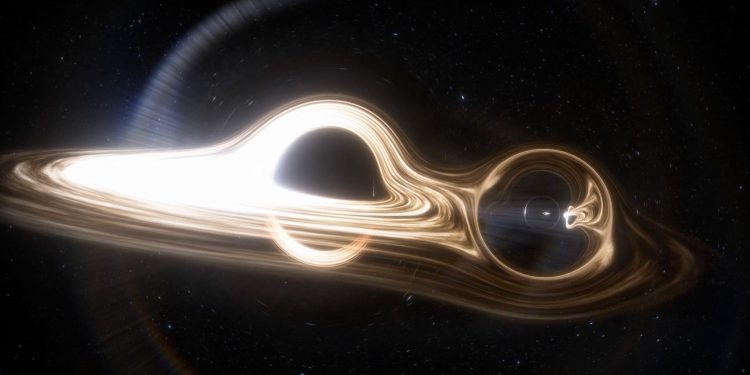For the first time ever, astronomers have photographed two black holes orbiting each other, providing visual proof of the existence of pairs of black holes.
Spotted by faint fluctuations in radio light captured by telescopes on the ground and in space, the two black holes are locked in a 12-year orbit some 5 billion light years from Earth.
“For the first time, we managed to obtain an image of two black holes rotating around each other,” explains the first author of the study. Mauri Valtonenastronomer at the University of Turku in Finland, said in a statement. “In the image, black holes are identified by the intense particle jets they emit. Black holes themselves are perfectly black, but they can be detected by these particle jets or by the glowing gas surrounding the hole.”
Black holes are born from the collapse of giant stars and grow by filling themselves with gas, dust, stars and other black holes. For some of these greedy space-time ruptures, friction heats the material that wraps in their maws and emits light that telescopes can detect, transforming them into what are called active galactic nuclei (AGN).
The most extreme AGN are quasars – supermassive black holes billions of times heavier than the sun which lose their gaseous cocoons while projecting explosions of light billions of times brighter than the brightest stars. When these jets are pointed toward Earth’s line of sight, they are called blazars.
Astronomers have already photographed supermassive giants center of our Milky Way and in the neighboring galaxy Messier87and ample evidence also exists for the existence of binary black holes and their mergers via gravitational wave detections. Yet despite long-held suspicions that OJ287 contained an orbiting pair, telescopes lacked the resolution to separate them by a single point.
In fact, observations of OJ287 date back to before astronomers even knew about black holes; its semi-periodic eruptions in intensity were included in late 19th century photographic plates designed to study nearby cosmic objects. Revision of data extracted from these plates and subsequent observations led astronomers to begin speculating in the 1980s that the system’s steady dimming and brightening was caused by two orbiting black holes.
To arrive at visual proof, astronomers used a radio image obtained by a network that includes the RadioAstron satellite, or Spektr-R, a Russian scientific satellite carrying a radio telescope operational from 2011 to 2019.

“The satellite’s radio antenna pointed halfway toward the Moon, which greatly improved the resolution of the image,” Valtonen explained. “In recent years, we have only been able to use ground-based telescopes, where the image resolution is not as good.”
By comparing the image’s features to previous calculations, the researchers distinguished two components corresponding to each black hole’s jets appearing exactly where theory suggests.
Yet a few wrinkles remain: The researchers caution that the two jets in the image could overlap, meaning the possibility cannot yet be completely ruled out that there is just one.
“When the resolution close to that provided by RadioAstron is achieved again, in the future… it will be possible to verify the ‘tail wagging’ of the secondary black hole,” they wrote.









